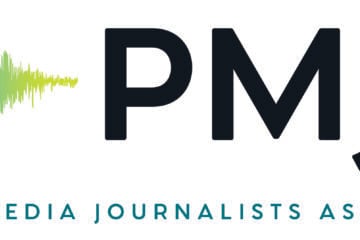Public radio stations face uphill battle in serving news deserts

ChrisDoDutch / iStock
A crisis has descended on communities across the country. Their news is drying up. Some are already “news deserts” — places where the daily newspaper has closed. Others are places where the daily paper is a shell of its former self with fewer pages and a shrunken news staff.
It’s a crisis because the loss of the local paper is not like other business closures. Studies indicate that locations that have lost their newspapers have seen a decline in voting rates in local elections, weakened community ties, diminished awareness of local affairs and less government accountability.
I recently completed a study aimed at determining whether local public radio stations can help fill the information gap created by the decline of local newspapers. Based on an extensive study of 217 NPR stations spread across the country, the study examined stations’ current contributions to local news while also seeking to determine what they would need to substantially increase their local coverage and audience.
Among the findings was a somewhat puzzling one. I had assumed that a station’s contribution to a community’s local news would be greater in communities where other news outlets are failing to provide quality local news. The public radio station would stand out if for no other reason than there was less competition from other news outlets. That was true for some of these communities but was not generally the case. Most stations operating in information-poor communities judged themselves to be a less important source of news than one or more of their competitors.
An explanation for this finding resides in what I call “hard places” — communities where public radio struggles to establish itself as a substantial source of local news.
Public radio stations depend heavily on listener contributions. Donations provide roughly 40% of the funding for public radio. But the amount varies widely from one station to the next. In both relative and absolute terms, stations in “hard places” get by far the lowest amount.
What is a “hard place” for local public radio to thrive? My survey found that it’s an area that has a below-average income level and is often somewhat rural. Its residents are not plentiful enough or affluent enough to be a robust source of funding for their local station. My study also found that “hard places” are disproportionately Republican. There was a time when Republicans were as likely as Democrats to be public radio listeners, but they have gravitated in recent years to conservative and Christian talk radio, effectively reducing the local public radio station’s contributor base.
Money is not the first thing that comes to mind when people think of public radio. But, as with other news outlets, money is what makes the news possible. Public radio stations need money to get on the air and stay there, and they need money to hire reporters and other news staff.
Stations in “hard places” have an acute staffing problem. My study found that the great majority have a news staff of 10 or fewer people and more than half have less than five. And that’s by a generous definition of what constitutes staff. Stations were asked to include in this count broadcast and digital reporters, editors, hosts, producers and others who contribute to local news and public affairs content in its various forms, as well as those who directly provide technical or other support to those staff members. In addition to full-time employees, stations were asked to include part-time employees and any students, interns or freelancers who contribute regularly.
One consequence of the staffing problem is that most of these local public radio stations are not all that “local.” My study found that in the 13-hour period from 6 a.m. to 7 p.m. on weekdays, only about two hours of locally produced news programming was carried on the average station, some of it in the form of talk shows and some of it as repeat programming. For stations with a news staff of 10 or fewer people, the daily average of locally produced news — even when including repeat programming — is barely more than one hour. Some stations are so short of staff that they do not do any original reporting, relying entirely on other local news outlets for the stories they air.
Staff is also the key to having a presence on the web. The over-the-air audience is graying. The public radio listening audience has declined in every age group except senior citizens. Five times as many Americans say they prefer to get their local news online as say they prefer to get it from the radio. For more than a decade, public radio stations have been boosting their presence on the web, but only some stations have succeeded in drawing significant traffic to their digital content and only a few of them are located in “hard places.”
Understaffing is the reason. It’s hard to create and manage content for the web with an undersized news staff. I found that stations with 10 or fewer people in their newsroom were only half as likely as those with a larger staff to feature local news on their homepage, and those with five or fewer rarely featured it. A local station’s website cannot become the “go-to” place for residents seeking local news on demand if the station fails to provide it.
The situation is discouraging enough that one might infer that local public radio is not part of the answer to the information deficit caused by the decline of local newspapers. However, as a scholar who studies media, I believe there are substantial reasons to conclude otherwise. I’ll highlight just three of them.
First, public radio stations want to play a larger role in meeting their community’s information needs. Over 90% of the respondents in my survey said they recognize the information deficit in their communities and want to be part of the solution. As one respondent said, “The need for the kind of journalism public media can provide grows more evident every day. The desire on the part of our newsrooms is strong.”
Second, public radio is known for its quality programming, an advantage that is not easily overstated. Nor can the advantage of being a known media brand in the community be overlooked. Today’s media environment is fragmented and hyper-competitive. It’s a difficult environment for newcomers without name recognition to gain a foothold, which is a reason that many local digital startups have failed to generate the revenue and audience needed to survive.
Third, the only thing preventing public radio stations in “hard places” from contributing substantially to their communities’ information needs is additional funding. These stations already have the funding to pay the cost of getting on the air and staying there. Such costs necessarily come first. Among the bottom half of stations in terms of budget size, I found that only 22% of the total budget on average was dedicated to the production of news and public affairs. Among the top half, the figure was 35%. In other words, nearly all new funding directed at stations in “hard places” could be dedicated to their news operation.
How much new money would these stations require? Based on the station estimates obtained in my study, the average per station would be roughly $1.3 million. Forty percent of the stations say the extra funding would make them “the leading news outlet” in their community in terms of both audience reach and quality of coverage. An additional 50% said it would position them as “a leading outlet.”
Although the amount of funding required for all such stations would be sizeable, it’s a relatively small sum given what’s at stake for the affected communities. Democracy itself is at risk when local news dries up. As the Knight Foundation’s Eric Newton noted, local news gives people the information “they need to run their communities and their lives.”
Thomas E. Patterson is the Bradlee Professor of Government & the Press at Harvard University’s Kennedy School and conducted the study on which this article is based.






